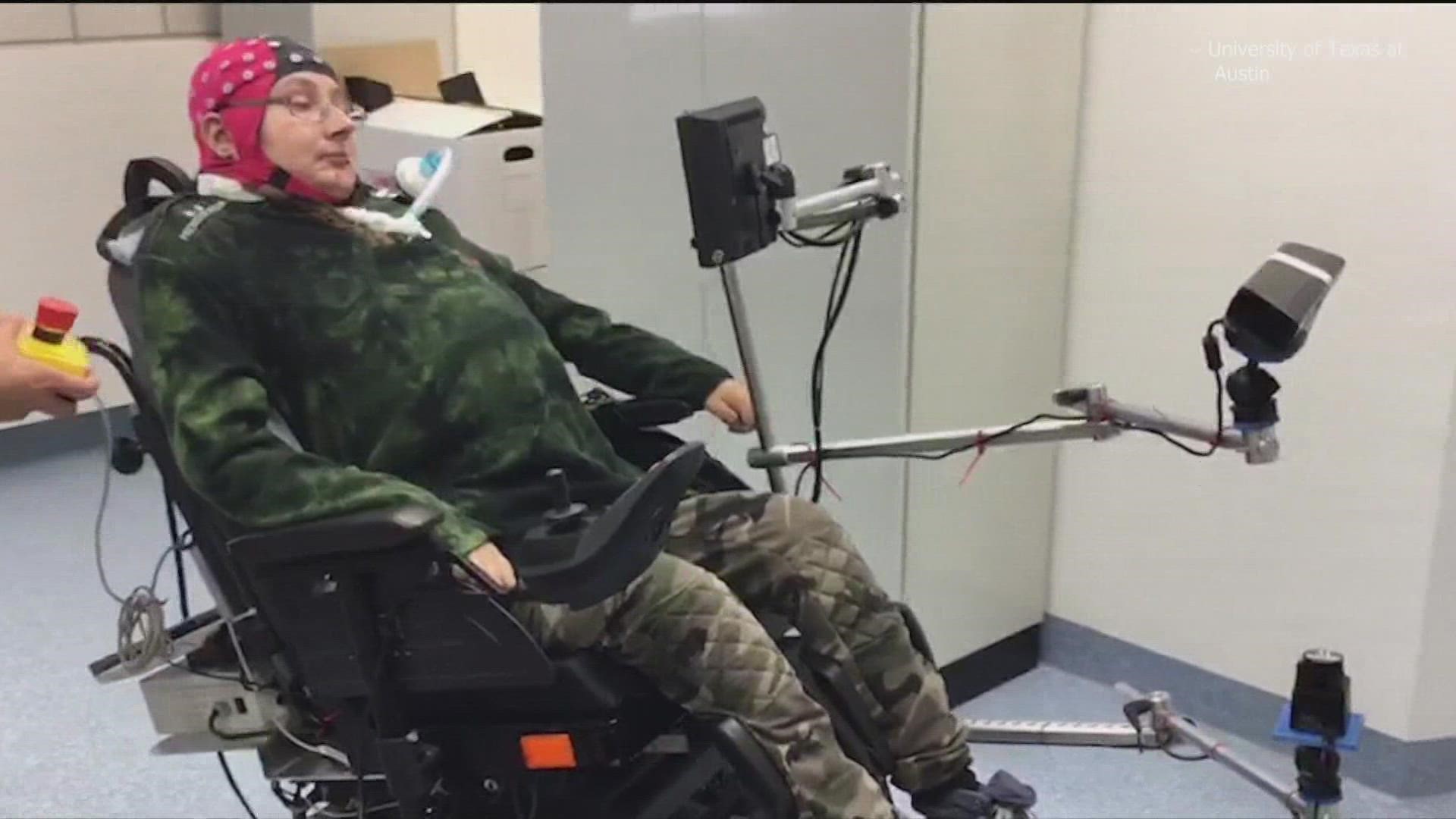AUSTIN, Texas — Researchers at the University of Texas at Austin took an innovative step toward combining brain-machine interfaces and accessibility for disabled individuals. In a recent study, the idea of a "thought-powered wheelchair" was brought to life.
Past studies centered around creating a wheelchair operated by brainpower were tested on non-disabled individuals, and resulted in the device being in control rather than the test subject.
However, the study done by UT researchers involved three people with tetraplegia, or the inability to move the arms and legs due to spinal injuries. All three participants were successful in operating a wheelchair with their minds.
"I have been doing this research for many years but its always such an emotional moment when you see and you share that moment where a person with a heavy disability accomplishes something through the moderation of the brain signal," said José del R. Millán, professor at the Cockrell School of Engineering’s Chandra Family Department of Electrical and Computer Engineering and leader of the international research team.
According to an article by the university, the study is significant because it is a sign of future viability for noninvasive technology to help those with limited motor function.
“We demonstrated that the people who will actually be the end users of these types of devices are able to navigate in a natural environment with the assistance of a brain-machine interface,” said José del R. Millán, professor at the Cockrell School of Engineering’s Chandra Family Department of Electrical and Computer Engineering and leader of the international research team.
During the study, participants wore electroencephalograms, which are caps with the ability to record electrical brain activity. Signals from the caps were translated into movement through computers.
"The users were taught methods to visualize moving the chair as if they were imagining moving their hands and feet," the article stated. "As the researchers observed the study participants, they saw changes to their brain activity as they delivered commands."
Researchers also altered the wheelchairs to understand their surrounding area as well as assist the users with desired direction to promote safety and accuracy.

